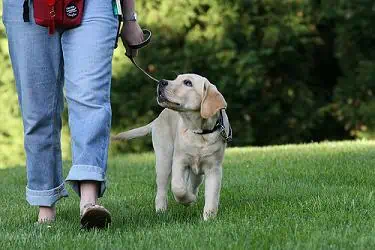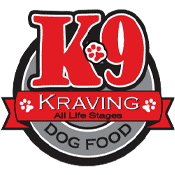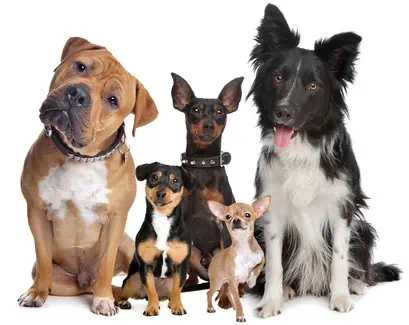Leash Training Your Dog: Part 1

Leash Training Equipment
Some dogs respond well to a basic leash and collar, but others need slightly different equipment to walk comfortably with their owners. Great options for leash training include:
• Martingale Collars (The ring sits separate from the color itself to limit slipping and reduce choking hazards)
• Head Halters
• No-Pull Harnesses
• Adjustable Leashes (You can use a standard leash once your dog is used to walking with you)
You may need to start with a no-pull harness or head halter at first because they allow greater control of your dog’s movements without hurting him along the way. Some dog breeds do better with no-pull harnesses no matter what because they reduce pressure on the back and neck. Research which option will be best for your dog before proceeding.
The Walk and Reward Leash Training Method
Perhaps the easiest way to leash train a dog is to use a walk and reward method. This plays off your dog’s basic instinct to repeat good actions he is rewarded for.
1. Put the leash on your dog, and reduce the length so that there is only a few feet of leash to work with.
2. Get your dog to sit or stand by your left side, with a set of dog treats in your left hand. Make sure the dog can see the treats so he knows he is working for something.
3. With your dog in position – not jumping or running around – say, “Let’s walk” and move a few steps forward. If the dog follows suit, pop a treat in his mouth.
4. Continue walking forward, putting a treat in your dog’s mouth every 5 steps or so.
5. Once he has mastered the waking element, stop moving and ask your dog to sit or stay. If he obliges, give him a treat for his good behavior.
6. Repeat steps 3 and 4, but spread the treats out to every 10 paces. Do the same for 20 steps, 40 steps, etc. until your dog is able to walk without being rewarded. You can let more of the leash out at this time, once you feel comfortable with your dog walking by your side.
If your dog starts to wander…
Stop moving, call his name, and wait for him to come to you. Ask him to sit, and praise him for doing so. Do not punish him for looking around. This is a natural reaction, and it is something he will do less of once he learns to stay by your side.



